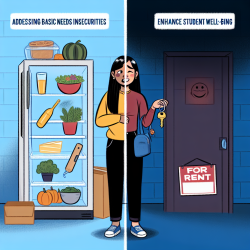Introduction
In the realm of speech-language pathology and child development, understanding the underlying factors that contribute to mental health challenges is crucial. A recent study titled Sleep disturbance and psychotic-like experiences among urban adolescents with and without parental migration sheds light on the significant relationship between sleep disturbances and psychotic-like experiences (PLEs) in adolescents. This research, conducted on a large sample of urban Chinese adolescents, reveals critical insights that can guide practitioners in improving mental health outcomes for children.
Key Findings
The study highlights several important findings:
- Urban left-behind children (LBC) experience higher rates of sleep disturbances and PLEs compared to non-LBC.
- Sleep disturbances are a robust risk factor for PLEs, irrespective of parental migration status.
- Better family function and a positive school climate are associated with a decreased risk of PLEs.
Implications for Practitioners
For practitioners working with adolescents, these findings underscore the importance of addressing sleep disturbances as a part of mental health interventions. Here are some actionable steps practitioners can take:
- Screen for Sleep Disturbances: Regularly assess sleep patterns in adolescents, especially those exhibiting signs of mental distress. Early identification can lead to timely interventions.
- Promote Healthy Sleep Hygiene: Educate families and schools on the importance of sleep hygiene, including consistent sleep schedules, a conducive sleep environment, and limiting screen time before bed.
- Enhance Family and School Support: Work with families to improve communication and support, and collaborate with schools to foster a positive and inclusive environment that supports mental well-being.
Encouraging Further Research
While this study provides valuable insights, it also opens avenues for further research. Practitioners are encouraged to explore the following areas:
- Longitudinal Studies: Conduct longitudinal research to better understand the causal relationship between sleep disturbances and PLEs.
- Intervention Efficacy: Investigate the effectiveness of specific interventions aimed at improving sleep hygiene and their impact on reducing PLEs.
- Cultural Contexts: Examine how cultural factors influence the relationship between sleep disturbances and mental health in diverse populations.
Conclusion
The association between sleep disturbances and PLEs highlights a critical area of focus for improving adolescent mental health. By integrating sleep assessments into routine evaluations and fostering supportive environments, practitioners can play a pivotal role in mitigating the risk of PLEs. This research serves as a call to action for continued exploration and innovation in mental health strategies for adolescents.
To read the original research paper, please follow this link: Sleep disturbance and psychotic-like experiences among urban adolescents with and without parental migration.










